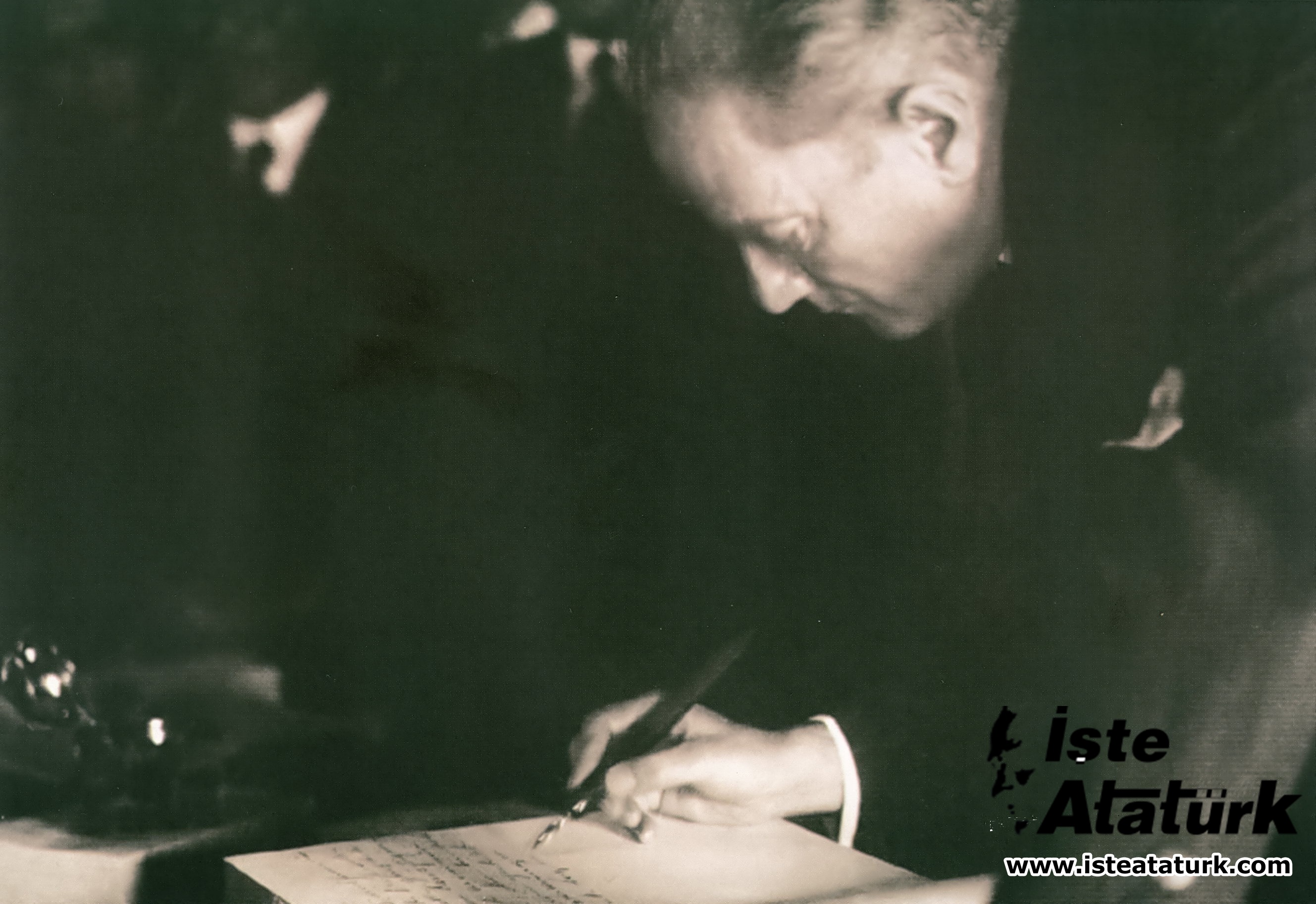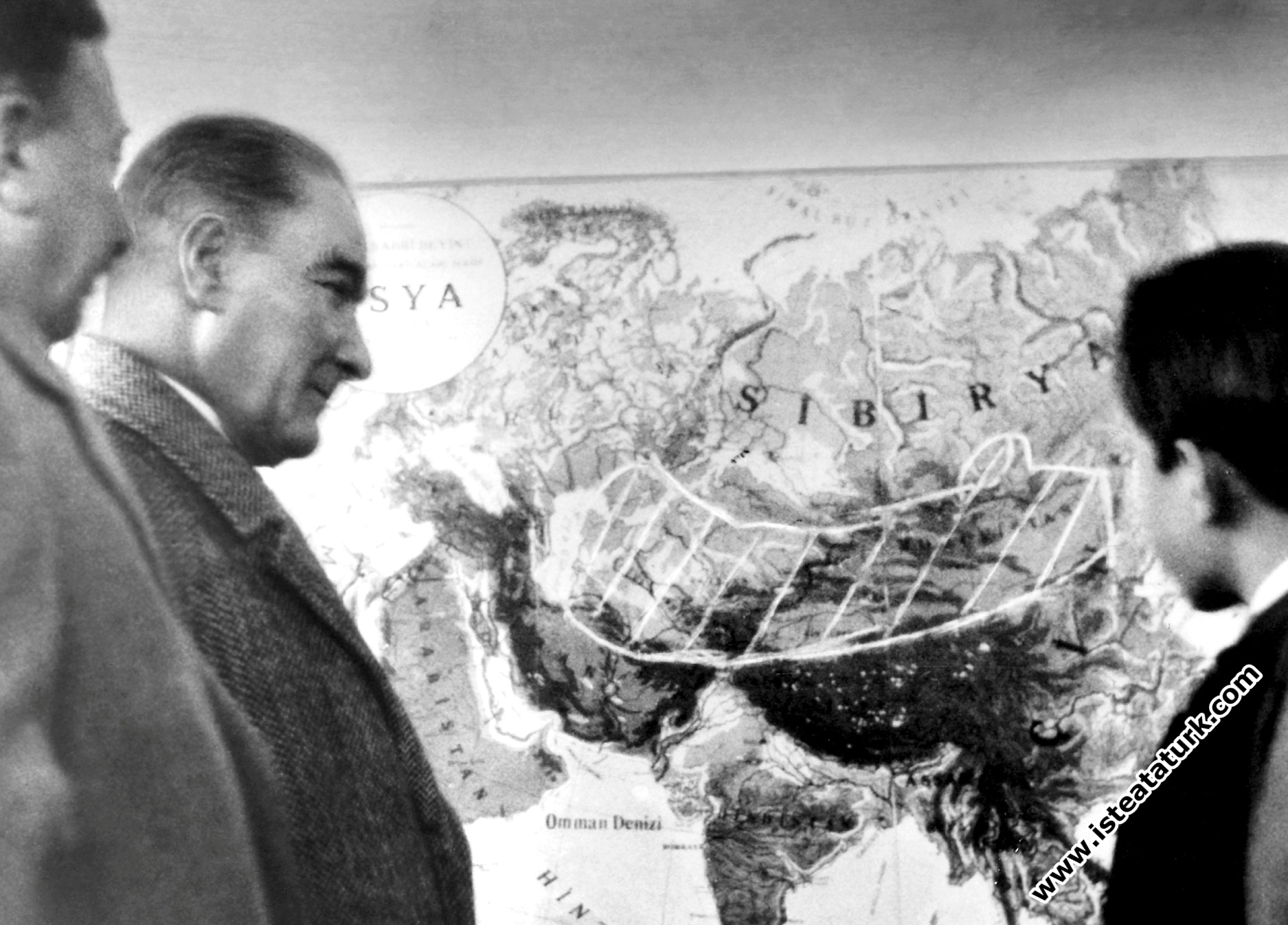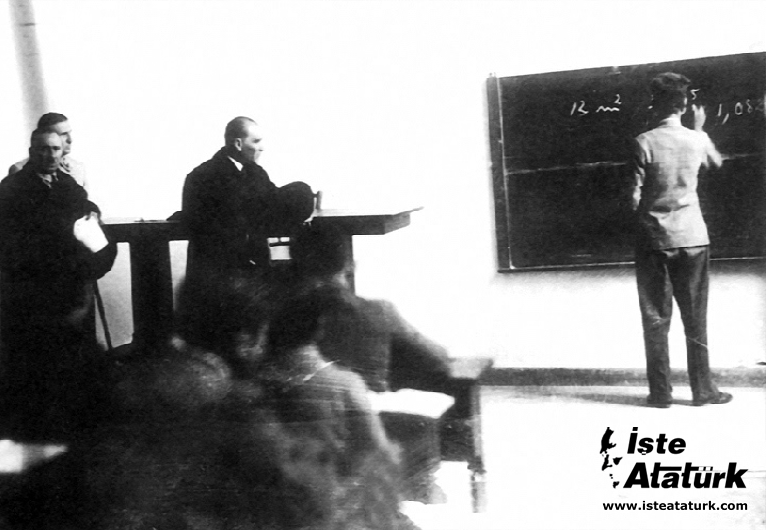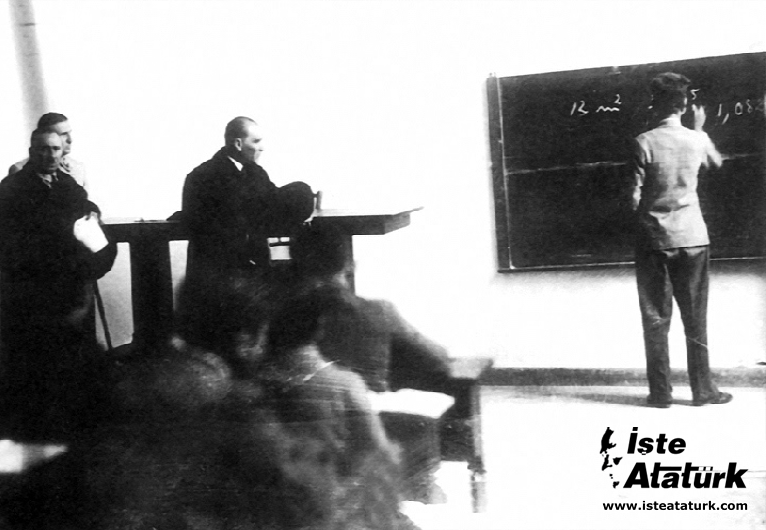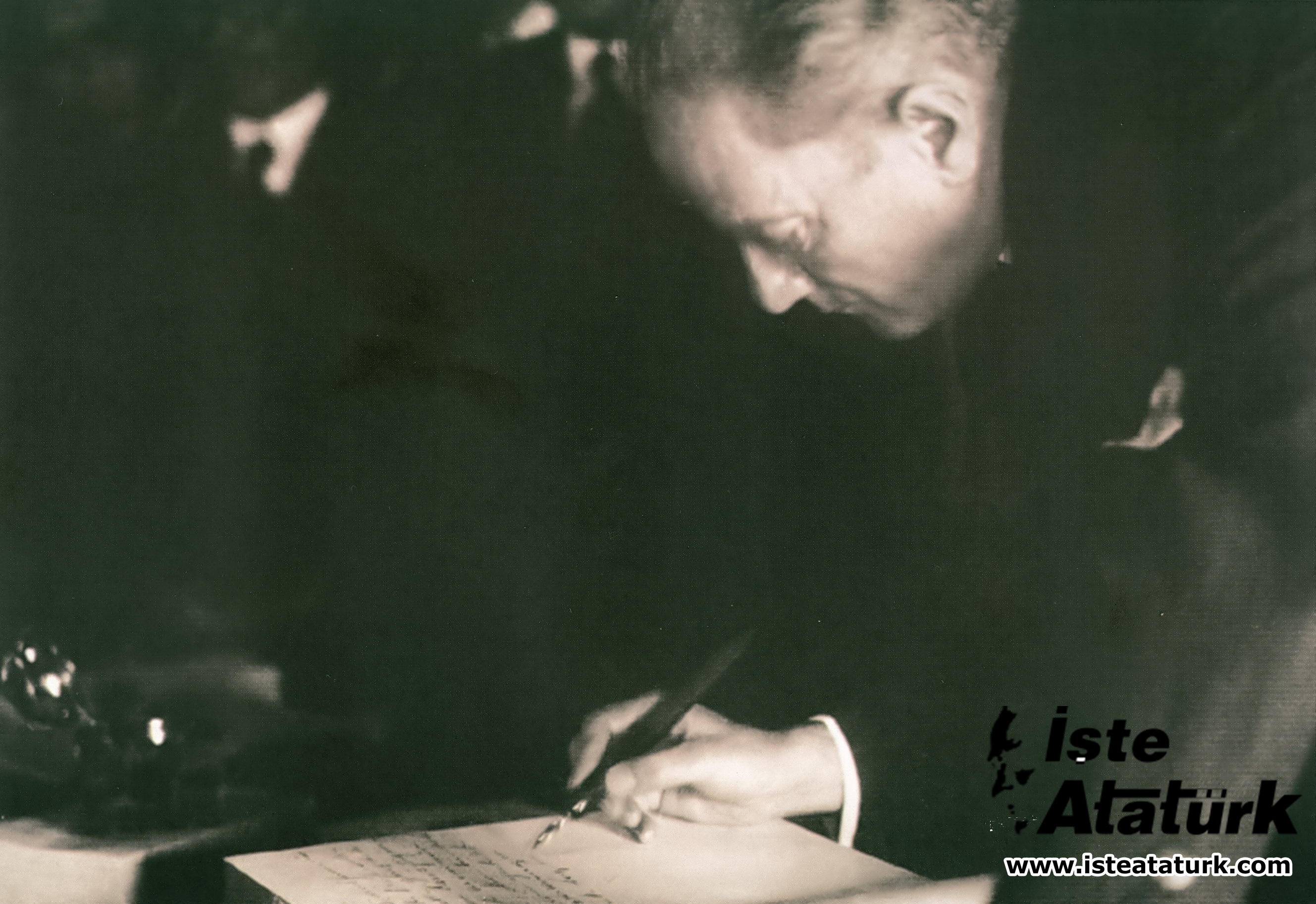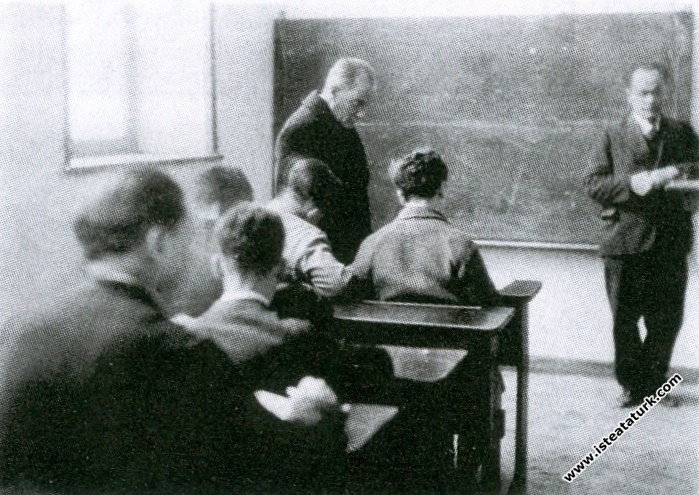
On the Importance of the Font Revolution
Character Size
“Friends: we accept new letters to express our beautiful language. Our beautiful, harmonious and rich language will emerge with new Turkish letters." Mustafa Kemal Ataturk
ON THE IMPORTANCE OF THE WRITTEN REVOLUTION
This article will be about the evaluation of the speech titled “Westernization in Turkey and Iran” given by Wallace Murray, Head of the Department of Near East Affairs of the US Department of State, at Brown University on March 12, 1932. Murray's evaluations, who worked for a long time at the Turkey desk during Atatürk's period and wrote hundreds of reports on Turkey, are very important. At the beginning of his speech, Murray stated that the image of the “unchanging East” is very common in the West, and states that Turkey destroyed this image with the revolutions it carried out in the ten years after the end of the First World War, and that Iran followed Turkey's path. One point he emphasizes is that the capitulations, which are considered indispensable, were first in Turkey, then in Iran, followed by Iraq, Syria, Iraq, Syria, which were the states under the mandate at that time. The fact that their operation was stopped in Palestine and Trans-Jordan, and that despite the newly established Kingdoms of Hejaz and Najd, they led a life without capitulation thanks to these new developments as the traces of the revolutions in Turkey. He explains that while the capitulations were abolished with an agreement between Afghanistan and Britain in 1921, parliamentary regimes were passed in Ethiopia and Afghanistan, Iran is the first Muslim member of the League of Nations for now, and other Arab countries can follow it if they modernize. As it is known, in the same year, in 1932, Turkey was taken as a member by the League of Nations and took its deserved place in the international arena. Despite the fact that the Kingdoms of Hejaz and Necd were newly established, the fact that they led a life without capitulation thanks to these new developments emerged as the traces of the revolutions in Turkey. He explains that while the capitulations were abolished with an agreement between Afghanistan and Britain in 1921, parliamentary regimes were passed in Ethiopia and Afghanistan, Iran is the first Muslim member of the League of Nations for now, and other Arab countries can follow it if they modernize. As it is known, in the same year, in 1932, Turkey was taken as a member by the League of Nations and took its deserved place in the international arena. Despite the fact that the Kingdoms of Hejaz and Necd were newly established, the fact that they led a life without capitulation thanks to these new developments emerged as the traces of the revolutions in Turkey. He explains that while the capitulations were abolished with an agreement between Afghanistan and Britain in 1921, parliamentary regimes were passed in Ethiopia and Afghanistan, Iran is the first Muslim member of the League of Nations for now, and other Arab countries can follow it if they modernize. As it is known, in the same year, in 1932, Turkey was taken as a member by the League of Nations and took its deserved place in the international arena. He explains that Iran is the first Muslim member of the League of Nations for now, and that other Arab countries may follow suit if they modernize. As it is known, in the same year, in 1932, Turkey was taken as a member by the League of Nations and took its deserved place in the international arena. He explains that Iran is the first Muslim member of the League of Nations for now, and that other Arab countries may follow suit if they modernize. As it is known, in the same year, in 1932, Turkey was taken as a member by the League of Nations and took its deserved place in the international arena.
According to the author, the changes Turkey has undergone in the last decade are the most notable and bolder reforms of all. Murray says, Turkey abandons the old slogans of “Pan-Turanism” and “Pan-Islamism” and creates a new State in the Anatolian peninsula with the slogan “Turkey is for Turks” and loosens the ties it has established with the East for centuries and turns to the West.
1 - Letter Revolution:
After drawing attention to the revolutions in Turkey one by one, Murray states that the most important development was the adoption of the Latin alphabet.
According to Murray, it was natural for Arabic to be accepted among the peoples who accepted this religion with the spread of Islam, since it was the language of the Prophet and the Holy Qur'an. He explains that Arabic has become widespread because the religion of Islam guides social life and requires that prayers be in Arabic, and the translation of these prayers into Turkish and Persian is opposed. However, he says that since both languages, namely Turkish and Persian, are not semantic, their phonetic systems do not conform to the Arabic alphabet, and Turkish, which has a rich vowel structure, is overwhelmed by Arabic, which has a rich consonant structure and has arranged its grammar in order to skip vowels. Murray stated that Arabic and Persian words were accepted into the Turkish language for separate reasons. He states that it was taken for legal and abstract discussions, while Persian is dominant in poetry and literature. Stating that the situation of Turkish in recent years has been disastrous, the author said that the Istanbul school made the language flattering and incomprehensible, and that even the words that were accepted as Turkish were taken from Arabic with suffixes and accepted as Turkish, and that the Istanbul school might have been influenced by the Byzantine model, therefore, Turkish people were against written texts. He sees that it has nothing to do with it. He quotes the following from Sir Charles Elliot's "Turkey in Europe" written in 1896: He observes that the Istanbul school makes the language flattering and incomprehensible, that even words that are considered Turkish are taken from Arabic and accepted as Turkish by adding suffixes, and that the Istanbul school may have been influenced by the Byzantine model, so Turkish people have no interest in written texts. He quotes the following from Sir Charles Elliot's "Turkey in Europe" written in 1896: He observes that the Istanbul school makes the language flattering and incomprehensible, that even words that are considered Turkish are taken from Arabic and accepted as Turkish by adding suffixes, and that the Istanbul school may have been influenced by the Byzantine model, so Turkish people have no interest in written texts. He quotes the following from Sir Charles Elliot's "Turkey in Europe" written in 1896:
“No Turk would be surprised because he does not understand written Turkish. He only respects the author of the work for his beautiful narration. The Turk does not see writings and literature as a normal part of his life. When told a story or business relationship, he easily understands what is being told. But he looks at a book or letter the same way an Englishman looks at a technical legal document, and it is likely that he himself does not know how to write. After all, what is desired is to understand the subjects in general...
Poor Turkish language! crushed under foreign words, its concise and lively expressive power and rich word formation were deliberately stopped and neglected...”
According to the author, the Turks, who determined the above situation well, changed everything that they considered to be obsolete in their country, and they leaned towards their own language and alphabet. Before the modernization works, changing the alphabet was considered before the 1908 Young Turk Revolution (1908). According to the author, if Turkey had not been drawn into the systematic of wars that would last until 1922, something could have been done about the language earlier. Among the innovations made after 1922, the adoption of the new alphabet was seen as one of the logical steps in the revolutions. The author sees this event as “the removal of capitulations in literature”.
Murray sees the adoption of the new Turkish alphabet in the Turkish-speaking regions of Russia in 1924 as an event that accelerated the adoption of the alphabet, and he finds this event impressive.
Another impressive event, according to Murray, was the conference of Turcologists in Baku in 1926. The Turkish delegate of the historical authority, Köprülüzade Fuad Bey, who attended this conference, conveyed the event to Turkey, as well as Azerbaijan's adoption of the new alphabet and the issue of new newspapers and stamps. The presence of the inscription "Turkish Posts" on the stamps and the news that a new currency would be issued in Turkish were also influential. He tells that Mustafa Kemal gave the order to start working on new Turkish letters in 1926 and that a committee was established in the Ministry of National Education regarding this work and that nothing came from this committee until the summer of 1928, but things accelerated from that year. Continuing its meetings from 1926 to 1928, the Committee clarifies the events by the hand of Gazi. Mustafa Kemal signs his photographs in new letters and sends İsmet Pasha the first telegram written in Latin letters. Finally, on August 10, 1928, at the end of the party he gave to his friends at the Sarayburnu Park Casino, Gazi gave the following speech, which he took out of his pocket in new Turkish letters:
“Friends: we accept new letters to express our beautiful language. Our beautiful, harmonious and rich language will emerge with new Turkish letters. We must free ourselves from the iron chain of incomprehensible and incomprehensible letters that have imprisoned our brains for centuries. We are determined to understand our language and we will surely understand it quickly and perfectly thanks to these new letters. I am sure of that. I want you to be sure too…”
After the Turkish Grand National Assembly, which convened in November, converted this reform into law, the Turkish people accepted this change as it was and gave themselves to the task of learning this article. As if by magic, all the street signs and the writings on the shops and boats have disappeared. Gazi, according to Murray, was the first teacher of new writings. On January 1, 1929, this new script was being taught to adults aged 16-45 in 2,655 schools, and a crowd of close to one million followed the lectures. This development, according to Murray, was very successful, and the adoption of the new letter law on November 1, 1928 was only a formality. As of January 1, 1929, the use of new letters in all state correspondence was made compulsory. For some exceptional correspondence, time was allowed until 1 June 1929.
Thus, without a doubt, the most important period of the Turkish Revolution was successfully completed.
Murray emphasized the desire of the Turks to open up to the West by giving place to the talks and words of the Turkish administrators due to the letter revolution.
On the other hand, the Anatolian villager, who had difficulties in learning to write Arabic for many years, made a great breakthrough in reading and writing with new letters and showed his determination in this matter. Persian and Arabic words were extracted and Turanian forms were preferred in words and some words were taken from French to express the language of science. The Arabic and Persian words adopted by the people were translated into Turkish using Turkish ornaments. It is expected that important works already written in the old language will be translated into the new written language. Meanwhile, some important works of the West are in the process of being translated into Turkish. For example: Homer's Iliad, Aristotle's Politics, Voltaire's Tales, Tolstoi's War and Peace, Shakespeare's King Lear, Milton's Paradise Lost. In addition to these, scientific, economic and sociological works are also in translation.
According to Murray, despite all kinds of modernization, the religion of the people has not been touched. Innovations taken from the West will be shaped by Turkish thinking in a very short time and will be molded according to the needs of the people. The situation is different with the alphabet reform. With this reform, relations with the East and cultural dependence were minimized. The cultural and geographical ties between the Turks, who can learn European languages more easily, and Europe will thus be broken, and the Turks will take their place alongside their Turanian cousins, Hungarians and Finns, in Europe.
II- Iran and Westernization:
Returning to the modernization movement in Iran, the author points out that this movement did not develop as quickly as in Turkey, and states that Iran has been reborn since 1925. Murray, who engages in the historical narrative of the developments on Iran, makes his most important analysis while describing the difference between the reforms. For example, he states that instead of new laws, old Iranian laws were revised and the old ones were preserved. He writes that the reform made in clothing could not be as deep-rooted as in Turkey. Although Finance Minister Taghi Zadeh put pressure on the adoption of the Latin alphabet, the situation is different from Turkey, as Iranians can read the poems of their poet Ferdowsi at home. On the other hand, Murray also reveals the effectiveness of the religious factor in this regard. He states that although Turks and Iranians are Muslims, the history of these two races shows a different development. The fact that Iranians are Shiites has created an antagonism between the two races, although this situation has decreased with the reforms, it has not led to a great rapprochement. Shiism played an important role in the resistance of Iranians against Turkish and Arab influence and was in their minds as an integral part of culture. Shiism, which was accepted in Iran during the Sassanid period, also provides legitimacy to the Iranian people. For this reason, Iranians could not be separated from their religious past. While the Turanian Turks were accustomed to obeying discipline and authority, the Aryan Iranians were individualistic and naturally conservative, and did not prefer Westernization for their national development. However, as they modernize in the future, these two societies may approach each other.
Conclusion:
While most of Murray's observations are correct, he does not examine a process of Westernization that has been going on since the Ottomans. Some Turkish historians attribute the westernization process to the pre-Sultan Selim period. For example, the proposal of a French officer named de Rochefort to establish an engineers department in the Ottoman army coincides with 1716. In 1788, Reis-ül Küttab Ahmet Atıf Efendi presented an analysis of the French Revolution to the palace. Although the Turks, who were observant of the West, who were afraid of a secular environment in the 18th century, approached the West more in the 19th century, it seems that they could not go far in terms of changing the order. Turks reached the peak in modernization with Mustafa Kemal since 1922.
Prof. Dr. Hasan Köni
Kaynak: ATATÜRK ARAŞTIRMA MERKEZİ DERGİSİ, Sayı 21, Cilt: VII, Temmuz 1991
